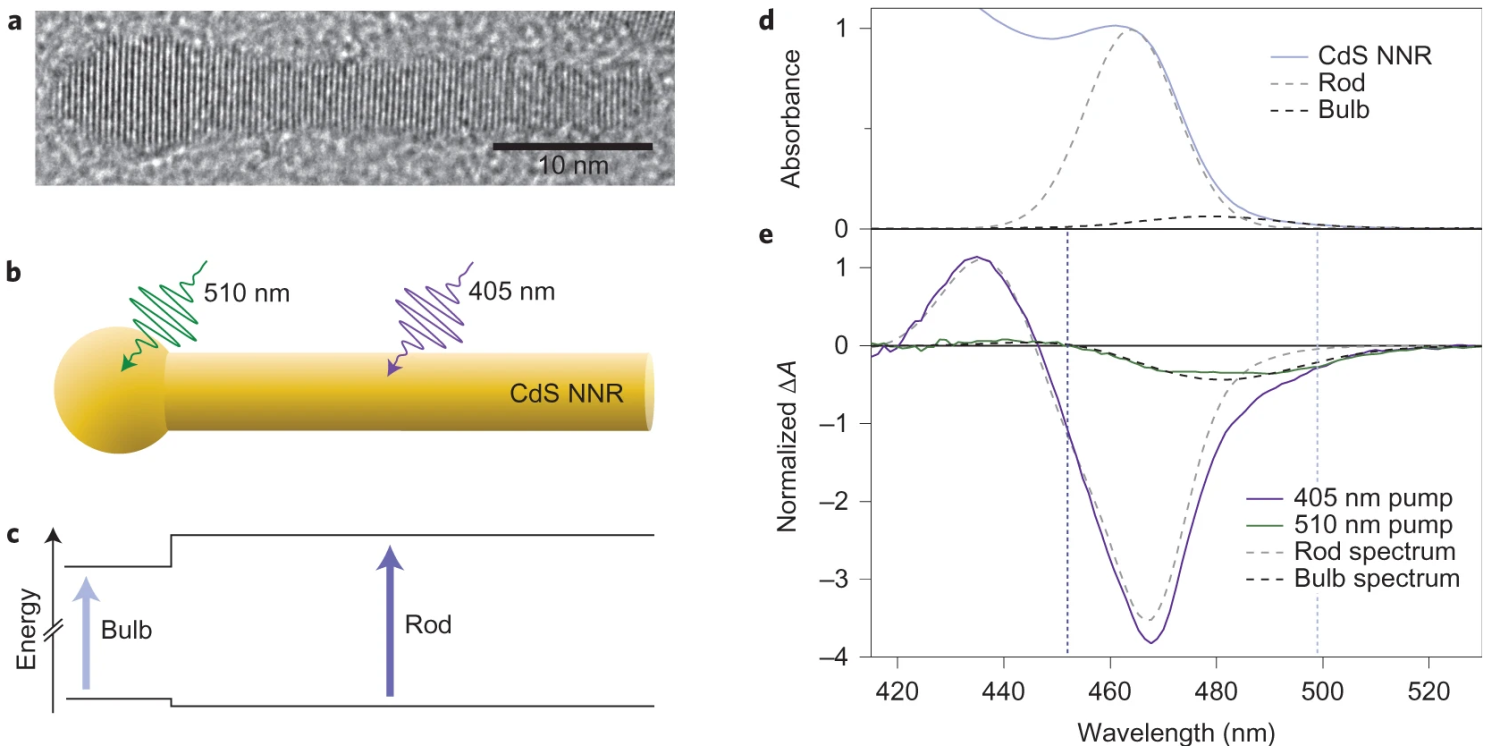Observation of Trapped-hole Diffusion on the Surfaces of CdS Nanorods

In CdS nanocrystals, photoexcited holes rapidly become trapped at the particle surface. The dynamics of these trapped holes have profound consequences for the photophysics and photochemistry of these materials. Using a combination of transient absorption spectroscopy and theoretical modelling, we demonstrate that trapped holes in CdS nanorods are mobile and execute a random walk at room temperature. In CdS nanorods of non-uniform width, we observe the recombination of spatially separated electrons and trapped holes, which exhibits a t−1/2 power-law decay at long times. A one-dimensional diffusion–annihilation model describes the time-dependence of the recombination over four orders of magnitude in time, from one nanosecond to ten microseconds, with a single adjustable parameter. We propose that diffusive trapped-hole motion is a general phenomenon in CdS nanocrystals, but one that is normally obscured in structures in which the wavefunctions of the electron and trapped hole spatially overlap. This phenomenon has important implications for the oxidation photochemistry of CdS nanocrystals.
Utterback, J. K., Grennell, A. N., Wilker, M. B., Pearce, O. M., Eaves, J. D., and Dukovic, G., Observation of Trapped-hole Diffusion on the Surfaces of CdS Nanorods. Nat. Chem. 8, 1061 (2016)

